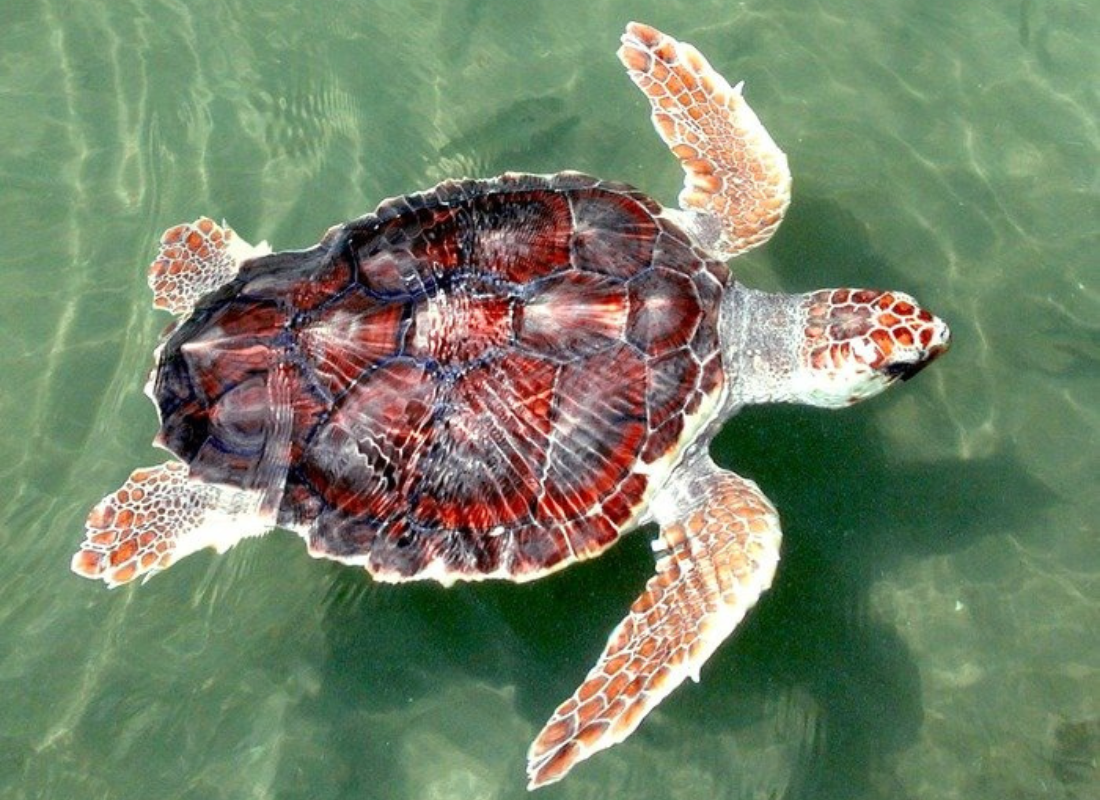
Sea turtles are a remarkable group of marine reptiles, known for their extensive migrations, long lifespans, and vital roles in ocean ecosystems. Here’s an in-depth look at sea turtles:
Species and Classification
 There are seven species of sea turtles, each with unique characteristics:
There are seven species of sea turtles, each with unique characteristics:
- Green Turtle (Chelonia mydas): Named for the greenish color of their body fat, these turtles primarily feed on seagrass and algae.
- Hawksbill Turtle (Eretmochelys imbricata): Recognizable by their narrow, pointed beak and beautifully patterned shell. They primarily eat sponges.
- Loggerhead Turtle (Caretta caretta): Known for their large heads and strong jaws, they feed on hard-shelled prey like crabs and mollusks.
- Leatherback Turtle (Dermochelys coriacea): The largest of all sea turtles, with a distinctive leathery shell. They feed mainly on jellyfish.
- Olive Ridley Turtle (Lepidochelys olivacea): Named for their olive-colored shells, they are the most abundant but also face significant threats.
- Kemp’s Ridley Turtle (Lepidochelys kempii): The smallest and most endangered sea turtle, known for their unique mass nesting called “arribada.”
- Flatback Turtle (Natator depressus): Found only in the waters around Australia, they have a flat shell and feed on a variety of invertebrates.
Habitat and Distribution

Sea turtles are found in all the world’s oceans except the Arctic. They inhabit a range of marine environments, from coastal areas and coral reefs to the open ocean.
Life Cycle and Behavior
- Nesting: Female sea turtles return to the same beach where they were born to lay eggs, often traveling thousands of miles. They dig nests in the sand and lay hundreds of eggs.
- Hatchlings: Once hatched, the tiny turtles make a perilous journey from the nest to the ocean, facing numerous predators.
- Juvenile Stage: After reaching the ocean, juveniles often spend years in the open ocean before returning to coastal areas.
- Maturity: Sea turtles take decades to reach sexual maturity, with some species maturing as late as 30-50 years.
Diet and Feeding
- Green Turtles: Herbivores, primarily consuming seagrass and algae.
- Hawksbill Turtles: Feed mainly on sponges, along with other invertebrates.
- Loggerhead Turtles: Carnivorous, eating crabs, mollusks, and other hard-shelled animals.
- Leatherback Turtles: Feed almost exclusively on jellyfish.
- Olive Ridley and Kemp’s Ridley Turtles: Omnivorous, eating a variety of prey including algae, crabs, and shrimp.
- Flatback Turtles: Feed on sea cucumbers, soft corals, and other invertebrates.
Conservation Status

Many sea turtle species are endangered or threatened due to several factors:
- Habitat Loss: Coastal development and beach erosion reduce nesting sites.
- Pollution: Plastic pollution, oil spills, and other contaminants pose significant threats.
- Climate Change: Rising temperatures can affect sex ratios of hatchlings, as temperature determines the sex of the eggs.
- Fishing Bycatch: Turtles often get caught in fishing gear, leading to injury or death.
- Poaching: Illegal hunting for their meat, shells, and eggs continues in some regions.
Conservation Efforts

Efforts to protect sea turtles include:
- Protected Areas: Establishing marine protected areas (MPAs) to safeguard critical habitats.
- Nesting Beach Protection: Monitoring and protecting nesting sites from human interference.
- Bycatch Reduction: Implementing turtle-excluder devices (TEDs) in fishing gear.
- Public Awareness: Educating communities about the importance of sea turtles and how to help conserve them.
- Rescue and Rehabilitation: Programs to rescue, rehabilitate, and release injured turtles.
CONCLUSION
 Sea turtles play a crucial role in marine ecosystems, such as maintaining healthy seagrass beds and coral reefs, which benefit other marine life. Protecting them is essential for the overall health of the oceans.
Sea turtles play a crucial role in marine ecosystems, such as maintaining healthy seagrass beds and coral reefs, which benefit other marine life. Protecting them is essential for the overall health of the oceans.
Sources
https://www.seaturtlestatus.org/sea-turtles-ultimate-expert-guide
https://oliveridleyproject.org/courses/e-turtle-school
https://www.wwf.org.uk/learn/wildlife/marine-turtles






